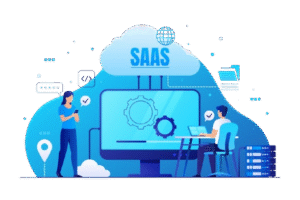The SaaS (Software as a Service) industry continues to grow rapidly in 2025, reshaping how businesses and individuals use technology. With global cloud adoption at an all-time high, SaaS is no longer just a convenient option—it has become the standard for delivering scalable, cost-effective, and innovative solutions across industries.
1. AI-Driven SaaS Solutions
One of the most significant transformations in 2025 is the deep integration of artificial intelligence into SaaS platforms. From automated customer support to predictive analytics, AI-driven SaaS tools help organizations make data-backed decisions faster. For example, marketing SaaS tools now offer hyper-personalization powered by AI, allowing companies to tailor campaigns with unmatched precision.
2. Vertical SaaS on the Rise
Generalized SaaS platforms are giving way to vertical SaaS—solutions designed for specific industries such as healthcare, education, logistics, and agriculture. In 2025, healthcare SaaS platforms are leveraging real-time patient monitoring, while agriculture-focused SaaS tools are helping farmers with weather prediction and smart crop management. This industry-focused trend ensures businesses get more specialized and relevant tools.
3. Increased Focus on Security & Compliance
With rising cyber threats and stricter data regulations, SaaS providers in 2025 are prioritizing advanced security measures. Zero-trust architecture, multi-factor authentication, and end-to-end encryption are now standard. Compliance with global standards like GDPR, HIPAA, and local data laws is a competitive advantage for SaaS vendors, especially for organizations operating across multiple countries.
4. Low-Code and No-Code SaaS Platforms
The demand for faster innovation has fueled the growth of low-code and no-code SaaS platforms. These tools empower non-technical users to build applications, workflows, and automations without deep programming knowledge. In 2025, businesses are using such platforms to reduce development costs and speed up digital transformation, making SaaS more accessible to startups and small businesses.
5. Subscription Flexibility & Usage-Based Pricing
Traditional flat-rate SaaS pricing models are evolving. In 2025, usage-based pricing—where customers pay for what they actually use—is gaining popularity. This model not only reduces customer churn but also aligns vendor revenue with customer success. Subscription flexibility, such as pause-and-resume features, is making SaaS more attractive in a competitive market.
6. SaaS for Remote and Hybrid Work
The shift to hybrid work environments has made collaboration and productivity SaaS tools essential. Cloud-based project management, video conferencing, and virtual workspace tools have matured to offer seamless integrations and better user experiences. In 2025, SaaS providers are focusing on immersive collaboration features, including AI-driven meeting summaries and virtual reality (VR) workspaces.
The Future of SaaS Beyond 2025
Looking ahead, SaaS will continue to evolve as technologies like quantum computing, Web3, and edge computing mature. Businesses that adopt modern SaaS tools will stay competitive, while vendors who innovate in personalization, automation, and security will dominate the market.
In short, SaaS in 2025 is smarter, more secure, and deeply embedded in everyday business operations. For startups, enterprises, and even individuals, the SaaS model remains the backbone of digital growth.






